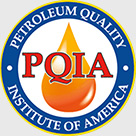This is part 2 of a 2 part series. Read part 1 here.
Demand for crude oil continued to increase as the industrial revolution continued. Natural oils were insufficient in lubricating metal based machinery, so petroleum based lubricants became commonplace. The first automobile had been made available in 1892, with the first Ford Model T rolling off the assembly line in 1908. By 1920, there were as many as 8.5 million automobiles registered in the United States and gasoline had replaced kerosene as the primary focus of the petroleum industry.
“We were building things so fast you had to find more economical and efficient ways to make that happen,” Palmore said. “As machinery was developed and combustion engines were developed, the more technical the oil had to be to take care of that.”
As automobiles continued to become more advanced, lubricants had to follow suit. Manufacturers began using vacuum distillation to process base oils and the society of automotive engineers created classifications based on viscosity. In the 1930’s, manufacturers started using solvent processing to improve their base stocks and by the end of the 1940’s additives became common in the industry. By 1947, the API had created their own categories for motor oil.
“As technology comes and the size of the engines increase, the oil has to be able to bear the load. It has to be able to perform all of its functions,” Palmore said. “As the automobile evolved, each vehicle had to have a new motor oil.”
Related: Learn more about PetroChoice
The importance of oil in military applications further pushed the industry to the forefront. By World War I, soldiers on horseback and cannons began to give way to tanks and personnel carriers. World War II saw even more advanced military vehicles and an increased focus on planes. Oil became such an important resource that cutting supply lines became a critical part of the war strategy. The Allied Oil Campaign focused exclusively on destroying Axis supply and refinery facilities in Europe. World War II also marked the first time synthetic oil was regularly used in vehicles.
The 1950’s saw oil overtake coal as the world’s leading fuel source. President Eisenhower signed the Federal Highway Act in 1956, which authorized the construction of 41,000 miles of roads that would span the United States, making car travel more viable outside major cities. Multi-grade motor oils were introduced and companies continued to work new additives into their base stocks as air and even space travel became possible.
Engines continued to become more and more powerful, with turbo charged engines popping up in the 70’s and 80’s. People also became more cognizant of the environmental impact of their engines. The government began creating emissions standards, which forced OEMs and oil companies to keep innovating.
“Turbo engines started coming out and base oil was changing. That’s also the time we started pushing fuel economy for on-road equipment,” Palmore said. “Technology had to be enhanced, we had to make lighter, more efficient engines without giving up performance.”
Oil has come a long way throughout the history of the United States. The API started out with three motor oil categories. They now have 12, and that is to say nothing of other standards like ILSAC and OEM specific standards like Dexos®. Vehicles continue to become more advanced and emissions standards continue to become more stringent. Oils and lubricants have played a major role in the growth of our country thus far, but with today’s complex equipment and environment, continuing innovation will be critical.



